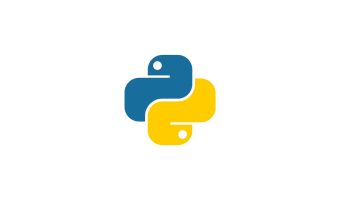Introduction to Python
What is Python?00:00:00
Why Python?00:00:00
Data Types and Data Structures00:00:00
Installing Python00:00:00
Python IDEs00:00:00
Why does Data Science require Python?00:00:00
Installation of Anaconda00:00:00
Understanding Jupyter Notebook00:00:00
Basic commands in Jupyter Notebook00:00:00
Understanding Python Syntax00:00:00
Python Basic Data types00:00:00
Data Structures :Lists, Dictionaries, Tuples, Sets00:00:00
Slicing00:00:00
Conditional Statement00:00:00
Loops00:00:00
Functions00:00:00
Array00:00:00
Selection by position & Labels00:00:00
Statistics in Data science
What is Statistics?00:00:00
How is Statistics used in Data Science?00:00:00
Population and Sample00:00:00
Parameter and Statistic00:00:00
Variable and its types00:00:00
Data Gathering Techniques
Data types00:00:00
Data Collection Techniques00:00:00
Sampling Techniques00:00:00
Convenience Sampling, Simple Random Sampling00:00:00
Stratified Sampling ,Systematic Sampling and Cluster Sampling00:00:00
Descriptive Statistics
Univariate and Bivariate Analysis00:00:00
Measures of Central Tendencies00:00:00
Measures of Dispersion00:00:00
Skewness and Kurtosis00:00:00
Box Plots and Outliers detection00:00:00
Covariance and Correlation00:00:00
Probability Distribution
Probability and Limitations00:00:00
Discrete Probability Distributions00:00:00
Bernoulli, Binomial Distribution, Poisson Distribution00:00:00
Continuous Probability Distributions00:00:00
Normal Distribution, Standard Normal Distribution00:00:00
Inferential Statistics
Sampling variability and Central Limit Theorem00:00:00
Confidence Intervals00:00:00
Hypothesis Testing00:00:00
Z -test, t-test00:00:00
Chi – Square Test00:00:00
F -Test and ANOVA00:00:00
Numpy – Numerical Python
Introduction to Array Creation and Printing of ndarray00:00:00
Basic Operations in Numpy Indexing00:00:00
Mathematical Functions of Numpy00:00:00
Data Manipulation with Pandas
Series and Data Frames00:00:00
Data Importing and Exporting through Excel, CSV Files00:00:00
Data Understanding Operations00:00:00
Indexing and slicing and More filtering with Conditional Slicing00:00:00
Groupby, Pivot table and Cross Tab00:00:00
Concatenating and Merging Joining00:00:00
Descriptive Statistics00:00:00
Removing Duplicates00:00:00
String Manipulation00:00:00
Dealing with missing value/null value and inconsistent value00:00:00
Data Visualization using Matplotlib and Pandas
Introduction to Matplotlib00:00:00
Basic Plotting00:00:00
Properties of plotting00:00:00
About Subplots00:00:00
Line plots00:00:00
Pie chart and Bar Graph00:00:00
Histograms00:00:00
Boxplot00:00:00
Scatterplot00:00:00
Seaborn Based Plotting Including Pair Plots, Heat Maps, Count plot along with matplotlib plots.00:00:00
MODULE 2:Machine Learning Using Python
Introduction to Machine Learning
Definition of Machine learning and its applications00:00:00
Difference between Artificial Intelligence and Machine Learning00:00:00
Supervised Versus Unsupervised Learning00:00:00
Regression Versus Classification Problems00:00:00
Assessing Model Accuracy00:00:00
Overfitting Vs Underfitting00:00:00
Regression Techniques
Estimating the Coefficients00:00:00
Assessing the Coefficient Estimates00:00:00
R Squared and Adjusted R Squared00:00:00
MSE and RMSE00:00:00
Multiple Linear Regression
Estimating the Regression Coefficients00:00:00
OLS Assumptions00:00:00
Multicollinearity00:00:00
Feature Selection00:00:00
Gradient Descent00:00:00
Polynomial Regression
Why Polynomial Regression00:00:00
Creating polynomial linear regression00:00:00
Evaluating the metrics00:00:00
Regularization Techniques
Lasso Regularization00:00:00
Ridge Regularization00:00:00
Elastic Net Regularization00:00:00
Case Study on Linear, Multiple Linear Regression, Polynomial Regression using Python.
Logistic regression00:00:00
An Overview of Classification00:00:00
Difference Between Regression and classification Models.00:00:00
Why Not Linear Regression?00:00:00
Logistic Regression:
The Logistic Model00:00:00
Estimating the Regression Coefficients and Making Predictions00:00:00
Logit and Sigmoid functions00:00:00
Setting the threshold and understanding decision boundary00:00:00
Logistic Regression for >2 Response Classes00:00:00
Evaluation Metrics for Classification Models:
Confusion Matrix00:00:00
Accuracy and Error rate00:00:00
TPR and FPR00:00:00
Precision, Recall, Specificity, F1 Score00:00:00
AUC – ROC00:00:00
Naive Bayes
Principle of Naive Bayes Classifier00:00:00
Bayes Theorem00:00:00
Terminology in Naive Bayes00:00:00
Posterior probability00:00:00
Prior probability of class00:00:00
Likelihood00:00:00
Types of Naive Bayes Classifier00:00:00
Multinomial Naive Bayes00:00:00
Bernoulli Naive Bayes and Gaussian Naive Bayes00:00:00
Decision Trees
Decision Trees (Rule Based Learning):00:00:00
Basic Terminology in Decision Tree00:00:00
Root Node and Terminal Node00:00:00
Regression Trees and Classification Trees00:00:00
Trees Versus Linear Models00:00:00
Advantages and Disadvantages of Trees00:00:00
Gini Index and Entropy00:00:00
Overfitting and Pruning00:00:00
Stopping Criteria00:00:00
Accuracy Estimation using Decision Trees00:00:00
Case Study: A Case Study on Decision Tree using Python
Resampling Methods:00:00:00
Cross-Validation00:00:00
The Validation Set Approach Leave-One-Out Cross-Validation00:00:00
k -Fold Cross-Validation00:00:00
Bias-Variance Trade-Off for k-Fold Cross-Validation00:00:00
Random Forest
What is it and how does it work?00:00:00
Variable selection using Random Forest00:00:00
Ensemble Methods in Tree Based Models
What is Ensemble Learning?00:00:00
What is Bootstrap Aggregation Classifiers and how does it work?00:00:00
Boosting: AdaBoost, Gradient Boosting
What is it and how does it work?00:00:00
Hyper parameter and Pro’s and Con’s00:00:00
Case Study: Ensemble Methods – Random Forest Techniques using Python Distance Based Algorithm
K-Nearest Neighbor Algorithm00:00:00
Eager Vs Lazy learners00:00:00
How does the KNN algorithm work?00:00:00
How do you decide the number of neighbors in KNN?00:00:00
Pros and Cons of KNN00:00:00
How to improve KNN performance00:00:00
Case Study: A Case Study on k-NN using Python Support Vector Machines
The Maximal Margin Classifier00:00:00
Hyper-Plane00:00:00
Support Vector Classifiers and Support Vector Machines00:00:00
Hard and Soft Margin Classification00:00:00
Classification with Non-linear Decision Boundaries00:00:00
Kernel Trick00:00:00
Polynomial and Radial00:00:00
Tuning Hyper parameters for SVM00:00:00
Gamma, Cost and Epsilon00:00:00
SVMs with More than Two Classes00:00:00
Case Study: A Case Study on SVM using Python UNSUPERVISED LEARNING
• Why Unsupervised Learning
• How it Different from Supervised Learning
• The Challenges of Unsupervised Learning
Why Unsupervised Learning00:00:00
How it Different from Supervised Learning00:00:00
The Challenges of Unsupervised Learning00:00:00
Principal Components Analysis
Introduction to Dimensionality Reduction and it’s necessity00:00:00
Curse of Dimensionality00:00:00
What Are Principal Components?00:00:00
Demonstration of 2D PCA and 3D PCA00:00:00
Eigen Values, Eigen Vectors and Orthogonality00:00:00
Transforming Eigen values into a new data set00:00:00
Proportion of variance explained in PCA00:00:00
Case Study: A Case Study on PCA using Python K-Means Clustering
Centroids and Medoids00:00:00
Deciding optimal value of ‘k’ using Elbow Method00:00:00
Linkage Methods00:00:00
Hierarchical Clustering
Divisive and Agglomerative Clustering00:00:00
Dendrograms and their interpretation00:00:00
Applications of Clustering00:00:00
Practical Issues in Clustering00:00:00
Case Study: A Case Study on Clustering using Python RECOMENDATION SYSTEMS
What are recommendation engines?00:00:00
How does a recommendation engine work?00:00:00
Data collection00:00:00
Data storage00:00:00
Filtering the data00:00:00
Content based filtering00:00:00
Collaborative filtering00:00:00
Cold start problem00:00:00
Matrix factorization00:00:00
Building a recommendation engine using matrix factorization00:00:00
Case Study: Movie Recommendation System using Python MODULE 3 :DEEP LEARNING
Introduction to Neural Network
What is artificial neural network?00:00:00
How neural networks works?00:00:00
Introduction to Perceptron & History of Neural networks00:00:00
Difference between Machine Learning and Deep learning00:00:00
Gradient Descent00:00:00
Stochastic Gradient descent00:00:00
Learning Rate and tuning00:00:00
Optimization functions00:00:00
Perceptron00:00:00
Multilayer Perceptron00:00:00
Back propagation and chain rule00:00:00
Fully connected layer00:00:00
Cross entropy00:00:00
Weight Initialization00:00:00
Regularization00:00:00
Building Deep learning Environment
Overview of deep learning00:00:00
DL environment setup locally: Installing Tensorflow, Installing Keras00:00:00
Introduction to Keras00:00:00
Tensorflow Basics
Placeholders in Tensorflow: Defining placeholders, Feeding placeholders with data00:00:00
Variables00:00:00
Constant00:00:00
Computation graph00:00:00
Visualize graph with Tensor Board00:00:00
Activation Functions
What are activation functions?00:00:00
Sigmoid function00:00:00
Hyperbolic Tangent function, Tanh00:00:00
ReLu -Rectified Linear units, Leaky Relu00:00:00
Softmax function00:00:00
Training Neural Network for MNIST dataset
Exploring the MNIST dataset
Defining the hyperparameters00:00:00
Model definition00:00:00
Building the training loop00:00:00
Overfitting and Underfitting00:00:00
Building Inference00:00:00
Classifying Images with Convolutional Neural Networks(CNN)
Introduction to CNN00:00:00
Train a simple convolutional neural net00:00:00
Pooling layer in CNN00:00:00
Building ,training and evaluating our first CNN00:00:00
Model performance optimization00:00:00
Introduction to Recurrent Neural Networks(RNN)
What are Recurrent Neural Networks (RNNs)?00:00:00
Understanding a Recurrent Neuron in detail00:00:00
Long Short-Term Memory(LSTM)00:00:00
Back propagation Through Time(BPTT)00:00:00
Implementation of RNN in Keras00:00:00
Sequence-to-Sequence Models for Building Chatbot Hand Written Digits and letters Classification Using CNN
Code Implementation00:00:00
Importing all of the dependencies00:00:00
Defining the hyperparameters00:00:00
Building a simple deep neural network00:00:00
Convolution in keras00:00:00
Pooling00:00:00
Dropout technique00:00:00
Data augmentation00:00:00








